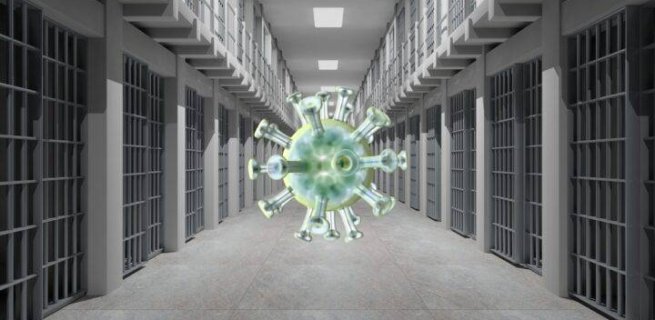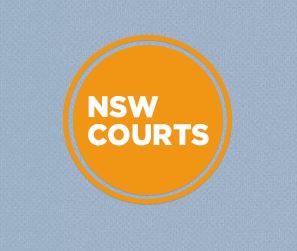By Paul Gregoire and Ugur Nedim.
Storm Leigh Zerafa said he didn’t “give a fuck” and he would shoot the baby, as he stood on a fence brandishing a black gel blaster pistol outside his alleged drug dealer’s house in the southern NSW town of Sanctuary Point at around 2.30 am on 23 July 2020.
This statement was directed towards the child’s 21-year-old mother, who’d just screamed out the window, “What are you doing? I’ve got a baby in here.”
Gel blasters fire small water-based pellets. But to the untrained eye, these weapons, which are increasingly being banned across Australia, can appear like a regular firearm with real bullets. And in NSW, it’s currently illegal to be in possession of such a weapon without a valid permit.
On the evening in question, Zerafa was in a state of drug-induced paranoia at the home of Tracy Ross, the owner of the pistol. On exiting the premises, Zerafa took the weapon, so Ross couldn’t use it upon him, and he then commenced threatening the five people in the neighbouring house.
As he was aware that he’d probably be going to prison after this behaviour, the offender subsequently paid a visit to his close friend Mr Jones, who’d recently slept with Zerafa’s girlfriend. And he reached through Jones’ window with the pistol and threatened to kill the man.
But the reason why this case stands out is what happened to Zerafa whilst being remanded at Parklea Correctional Centre for over a year, as, after a COVID-19 outbreak occurred at the facility, guards kept the uninfected man in a cell with a COVID positive inmate.
COVID confinement
During the sentencing hearing on 7 October this year, an affidavit written by Zerafa and dated the day prior was submitted to the NSW District Court. And Judge Andrew Colefax outlined that as the statement remained unchallenged, he’d accepted it as true.
Zerafa’s statement outlines that about six weeks before his court appearance, his cellmate tested positive to COVID-19. Yet, despite this, the inmate who was infected with the potentially deadly virus continued to be held in the same cell with Zerafa, who’d tested negative.
And three weeks after the cellmate first tested positive, both men were then moved to the ICU section of the prison.
According to Zerafa, around 30 other men who were COVID positive were transferred to this section, in order to isolate them from other inmates. And about 10 other prisoners who, like him, weren’t COVID positive were also confined to this area.
During his time with his COVID positive cell mate, Zerafa was “constantly worried about catching” the virus, and he wore a mask 24 hours a day.
And following his cellmate having been released from prison four weeks after first testing positive, Zerafa continued to be held in the ISU wing up until his court date.
“From my cell, I can hear COVID-19 positive inmates coughing loudly, yelling out in pain and calling out to the correctional officers to give them Panadol,” Zerafa explained.
“Occasionally, I see COVID-19 positive inmates being pushed around in wheelchairs,” he continued. “I feel frightened when I hear and see these things. I also feel very paranoid about catching COVID-19.”
By the time he appeared in court, Zerafa had been locked down 24 hours a day for six weeks but had never tested COVID positive himself.
When querying his situation, the prisoner was told, on five separate occasions, that as soon as he caught the virus and recovered, he’d be returned to the general population.
And despite repeatedly asking to be administered with the COVID vaccine, Zerafa only received his first dose five weeks after his cellmate initially tested positive.
The charges faced
Both parties who Zerafa threatened with the gel blaster pistol called the police after the incidents. And following his arrest, the offender pleaded guilty to the three charges that were laid against him on the earliest possible occasion.
The first count was possession of an unauthorised pistol, contrary to section 7(1) of the Firearms Act 1996 (NSW). This carries a maximum penalty of 7 years imprisonment, and a standard non-parole period (SNPP) of 4 years applies to this offence.
An SNPP is a reference point or guidepost for the sentencing judge when determining the minimum time a person must spend behind bars before being eligible to apply for release on parole.
The second charge was threatening to use an offensive weapon to commit a serious indictable offence – that being intimidation – contrary to section 33B(1)(a) of the Crimes Act 1900 (NSW). The maximum penalty for this crime is 12 years inside and no SNPP applies.
The third offence Zerafa plead guilty to was aggravated break, enter and commit a serious indictable offence, contrary to section 112(3) of the Crimes Act. This crime carries a maximum penalty of 25 years inside, and a 7 year SNPP applies to it.
On sentencing
In his findings, Judge Colefax outlined that Zerafa had a “profoundly dysfunctional” upbringing and, therefore, his “moral culpability” was reduced and this served to lessen the length of his imposed sentence.
His Honour outlined that Zerafa was subjected to severe abuse at home, as well as when being held in juvenile detention facilities. And he suffered a long list of psychological conditions, including long-term substance use disorders, as well as his health being compromised due to his having hepatitis C.
In terms of the evidence surrounding Parklea having kept him in a COVID hotspot whilst being uninfected, his Honour said this was “extremely concerning”, although it didn’t seem to be an isolated matter and he cited another case involving a similar situation.
“Clearly, the circumstances in which you have been detained for the last 2 months have been extremely confronting and will be taken into account, as in the nature of extra-curial punishment, in fixing the head sentence,” the judge explained.
Extra-curial punishment is a loss or detriment suffered by an offender as a consequence of the offence they committed, which is outside the normal parameters of sentencing. And as in this case, it can be used as a mitigating factor in imposing a sentence.
Judge Colefax advised that Zerafa would receive a 25 percent discount on his sentence due to the utilitarian value of his early guilty plea. And due to the offender’s situation, his Honour found special circumstances, which allowed him to impose a sentence with a longer parole period.
Section 44 of the Crimes (Sentencing Procedure) Act 1999 (NSW) stipulates that a parole period must not exceed a third of the time an offender has to remain in prison. However, if a judge finds special circumstances more time can be spent in the community under supervision.
So, on 15 October this year, Judge Colefax sentenced Zerafa to 7 years imprisonment, with non-parole set at 4 years from the date he was first remanded.











